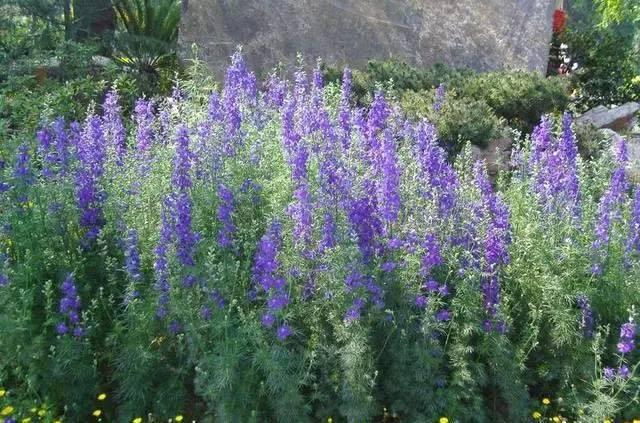70 common landscape flowers and plants
Flower borders are a form of floral application in public green spaces in large and medium-sized cities. Scientifically and artistically crafted flower borders create a botanical landscape that "despite being human-made, appears to have been created by nature" and "derives from nature, yet transcends nature." Many parks, recreational plazas, residential areas, and other green spaces feature various flower borders, enriching the visual experience and ensuring landscape diversity while also ensuring species diversity.
01: False: Dragon head
Morphological characteristics:
This perennial herb stands 60-120 cm tall with square stems. Its leaves are opposite, lanceolate, and have finely serrated margins. It blooms in terminal spikes and lip-shaped corollas during the summer solstice and autumn. The inflorescence blooms gradually from the base to the top, with a long flowering period. The flowers are reddish, purplish-red, or variegated.
Growth habits:
It prefers loose, fertile, and well-drained sandy loam, but does not thrive in dry summers. It blooms from July to September. The plant grows in clusters, with its flower spikes swaying gracefully in the wind. Its strong rhizomes make it easy to seed, and a single plant will often produce numerous seedlings.
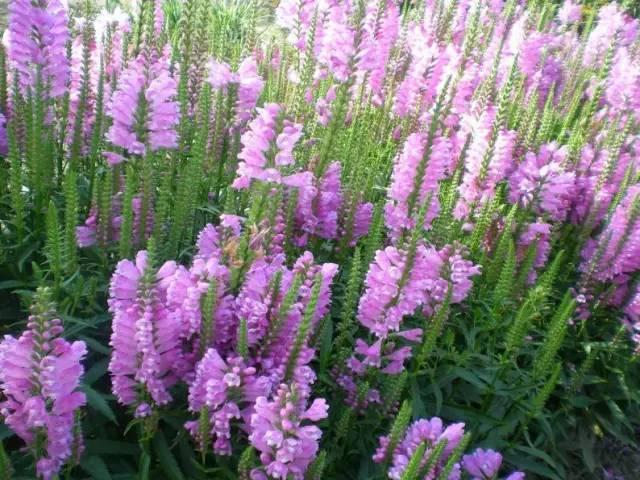
02: Veronica paniculata
Morphological characteristics:
Veronica odorata is a perennial, cold-resistant herbaceous plant in the Scrophulariaceae family, growing to approximately 45 cm tall. Its leaves are opposite, lanceolate to ovate, nearly sessile, 5-20 cm long, and serrated. Its flowers are blue or pink, 4-6 mm in diameter, forming compact, determinate racemes. They bloom from June to August.
Growth habits:
It grows naturally on calcareous grasslands and gravelly hills. It prefers light, tolerates partial shade, and grows well on a variety of soils. Avoid wet soils in winter.
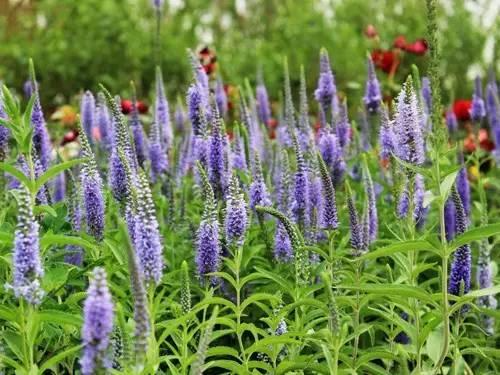
03: Tradescantia
Morphological characteristics:
A perennial herb, up to 30-50 cm tall, with an erect, cylindrical, pale green, smooth stem, broad linear leaves, slightly pink, curved, with the leaf surface folded inwards, sheath-shaped base, and clusters of blue-purple flowers at the top of the branches, surrounded by 2 bracts of different lengths, about 2-3 cm in diameter, 3 sepals, green, with 6 stamens, and hairy filaments. The flowering period is from May to July, and a single flower is open for only 1 day.
Growth habits:
It is native to North America and is commonly cultivated in China. It enjoys full sun but can tolerate partial shade. Tradescantia is sturdy and cold-resistant. It can overwinter in the wild in North China. Its soil requirements are not very strict.
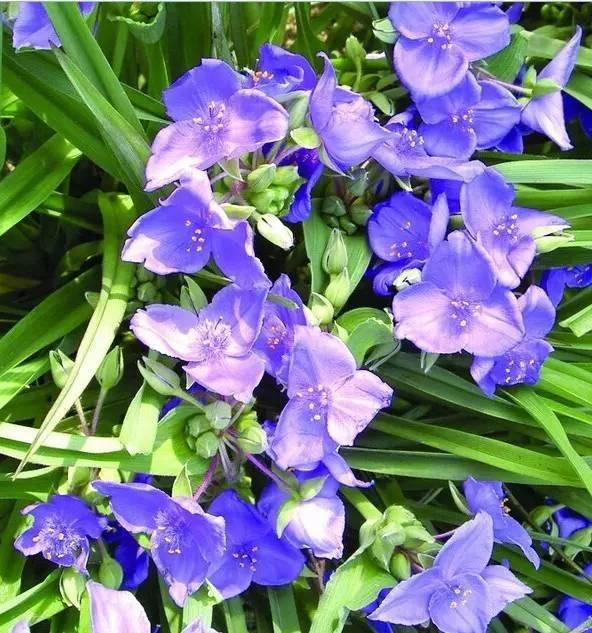
04: Martian Flower
Morphological characteristics:
This perennial herbaceous bulb has three flower colors: red, orange, and yellow. It tolerates high temperatures and blooms continuously through midsummer. It is a great material for borders, flower beds, and cut flowers.
Growth habits:
It prefers full sun and is cold-resistant. In the middle and lower reaches of the Yangtze River, the bulbs can survive the winter in the open air. It grows best in well-drained, loose, fertile sandy loam. It requires sufficient soil moisture during the growing season.
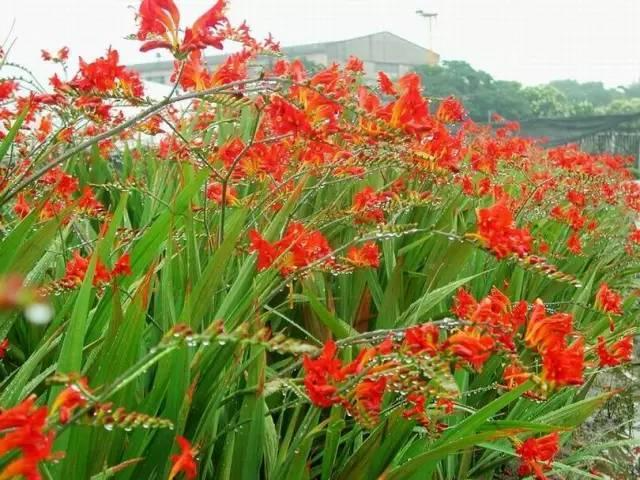
05: Iris
Morphological characteristics:
A densely clumping perennial herb that blooms from May to June and bears fruit from June to September.
Growth habits:
It is native to Japan but is also widely distributed in Central Asia and Korea. It is salt- and alkali-resistant, resilient, and has a well-developed root system. It grows along roadsides in wasteland, in grassy areas on hillsides, and in saline grasslands. It can be used for soil and water conservation, saline-alkali land reclamation, industrial wasteland transformation, landscaping, as a groundcover, in borders, or as a standalone plant. The entire plant is used medicinally to clear heat, stop bleeding, and detoxify. The leaves can be used as bangs and straw.
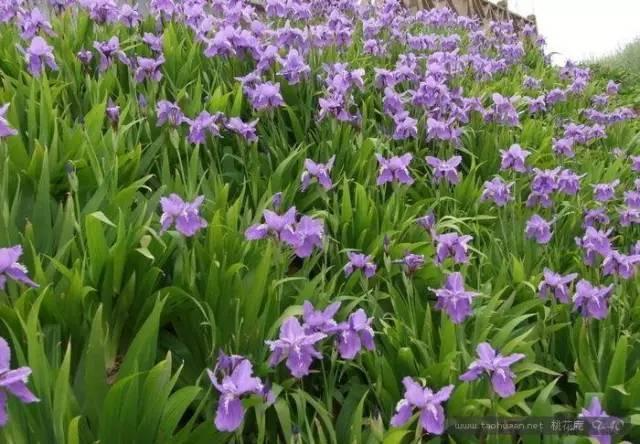
06: Rosemary
Morphological characteristics:
A shrub up to 2 meters tall. The stem and older branches are cylindrical, with dark gray bark that is irregularly fissured and heavily flaked. Young branches are quadrangular and densely covered with fine white, star-shaped hairs. The leaves are usually clustered on the branches, with a short stem or petiole. The leaves are linear, 1-2.5 cm long and 1-2 mm wide, obtuse, tapering at the base, entire, curled back, leathery, slightly above the smooth surface, nearly glabrous, and densely covered with white, star-shaped hairs beneath.
Growth habits:
Rosemary prefers warm climates, but Taiwan's flat land slows growth during periods of high temperatures. Temperatures without cold winter winds are more suitable for its growth. Regarding water availability, rosemary's leathery leaves are more drought-tolerant, so soils with a high sand content and good drainage are more conducive to growth and development. It's worth noting that rosemary grows slowly, which also means it has a weak regeneration ability. Extreme care must be taken when pruning and harvesting, especially when cutting old, lignified branches very quickly. Sudden, over-cutting often prevents the plant from sprouting. It's safe to prune no more than half the length of the branch at a time.
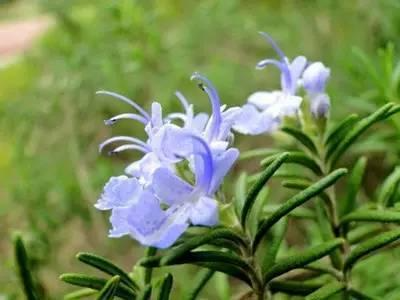
07: Fruit Orchid
Morphological characteristics:
Lamiaceae, genus Argenteus; evergreen shrub, the whole plant is silver-gray, the flowers are blue, and it blooms in spring.
Growth habits:
It likes light, has strong adaptability, grows quickly and is resistant to pruning; it is suitable for flower borders and hedges.
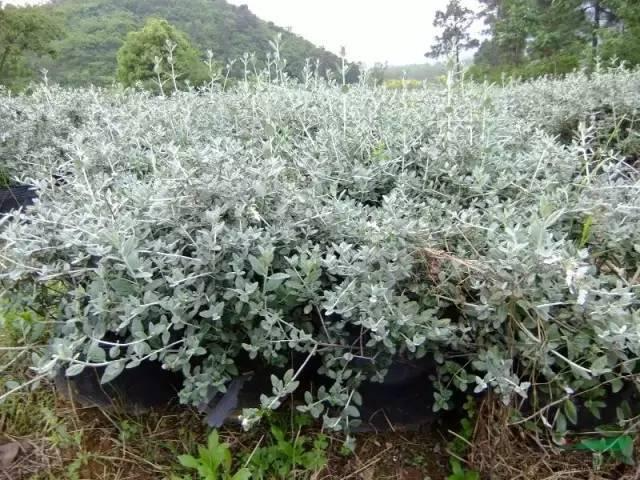
08: Vitex australis
Morphological characteristics:
Vitex agnus-castus is an aromatic shrub in the Verbenaceae family, Lamiales. It reaches 5 meters tall. Its flowers are lavender rosettes, clustered in spikes. Its branches are flexible enough for basket weaving. Its red fruit is used for seasoning. Its leaves are shallowly lobed, with 5 to 7 lobes, and its underside and branches are covered with white felt-like hairs. It is native to Eurasia and has been successfully introduced to North America.
Growth habits:
It is light-resistant, cold-resistant, heat-resistant, drought-resistant, and barren-resistant. It has strong growth potential, strong resistance to adversity, and few diseases and pests. It has strong branching ability and strong resistance to pruning. Multiple pruning is beneficial to the formation and flowering of the plant. Cutting flowers after flowering can prolong flowering.
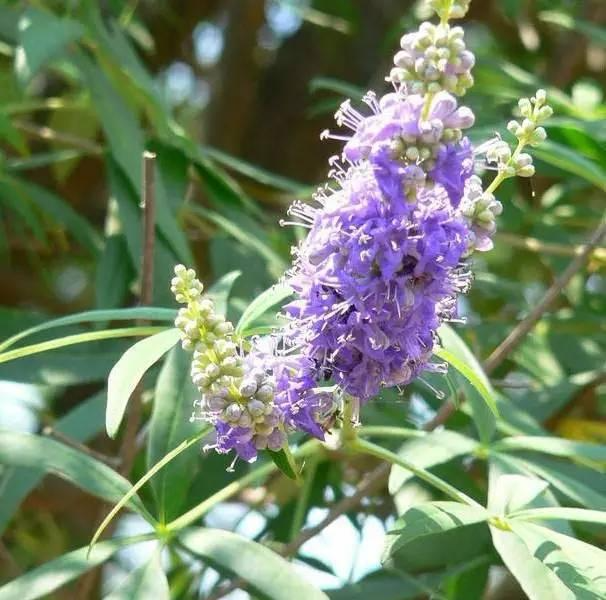
09: Caryopteris
Morphological characteristics:
Also known as orchid mint and mountain mint, this perennial herb grows 35 to 90 cm tall. Its leaves are simple and opposite, with petioles 3 to 4 mm long. The flowers are blue-purple, solitary in the leaf axils and pedicel-bearing. The stem is slender, with a pair of short, linear bracts at the middle and upper parts. The calyx is short-tubular, pubescent, and has golden-yellow glands, and is 5-lobed and ovate-lobed. The corolla is 4-lobed. There are 4 entire stamens, 2 of which are strong; there is one pistil, with slender, smooth florets with two lobes at the apex. The ovary is superior and densely pubescent. The capsule is hairy. Blooms in April.
Growth habits:
It grows in mountainous areas and along roadsides. It is distributed in Anhui, Jiangsu, Zhejiang, Jiangxi, and other areas. It is light-loving, cold-resistant, drought-resistant, and tolerant to poor soil.
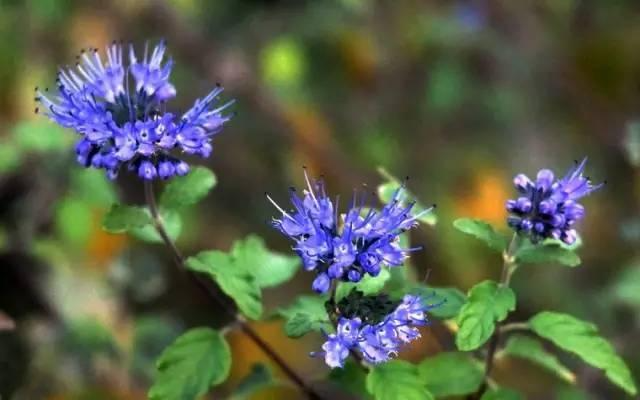
10: American Forsythia
Morphological characteristics:
Forsythia and Admiral's Leguminosae cypress, with arched branches, layered pith, oblong to ovate-lanceolate leaves, sometimes 3 deeply lobed or 3 leaflets, golden color, blooms in the dry spring, the flowering period is from March to April, it grows vigorously, and the green leaf period is very long, from March to January of the following year, which is a emerald green landscape in late autumn and early winter.
Growth habits:
This tree is a strong, drought-tolerant plant. It should be planted in deep soil. It has a long flowering period and is cold-resistant. It is resistant to pruning and has strong adaptability, making it a promising candidate for widespread adoption.
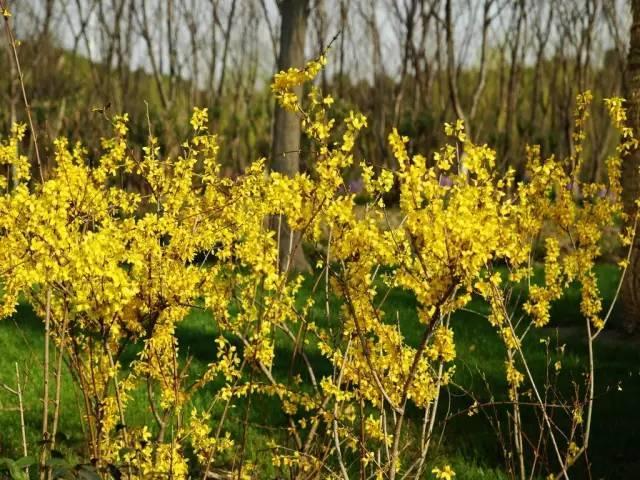
11: Silver Girl
Morphological characteristics:
Ligustrum lucidum is an evergreen shrub of the Oleaceae family, growing to approximately 1.5 to 1.8 meters tall. Its leaves are opposite, oval, and marked with white. Its inflorescence is terminal and white, with a panicle that blooms from June to July.
Growth habits:
It has a pleasant light exposure, does not require soil, grows quickly, has strong germination ability, and is resistant to pruning. It has beautiful color all year round, grows vigorously, and is evergreen. It is an excellent flower arrangement plant.
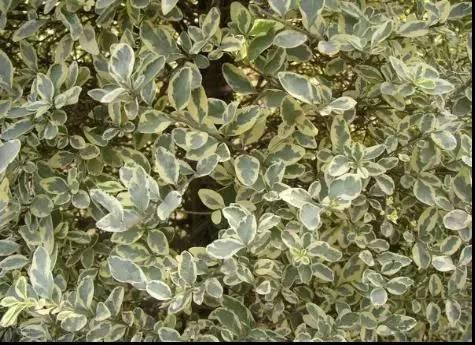
12: Fragrant Jasmine
Morphological characteristics:
An evergreen shrub with branches and thin leaves that become vine-like, pinnately compound leaves, alternate, 5-7 leaflets, cymes, fragrant flowers, bright yellow, blooming from May to June, and flowering from October to November.
Growth habits:
It is light-loving, tolerant to half-light, regardless of soil, cold-resistant and drought-resistant, requiring fertile, moist and well-drained soil. It prefers warm and humid climates, is more cold-resistant, and prefers acidic soil. Potted plants are located south of the Yangtze River and placed in a greenhouse in winter to prevent freezing and shedding.
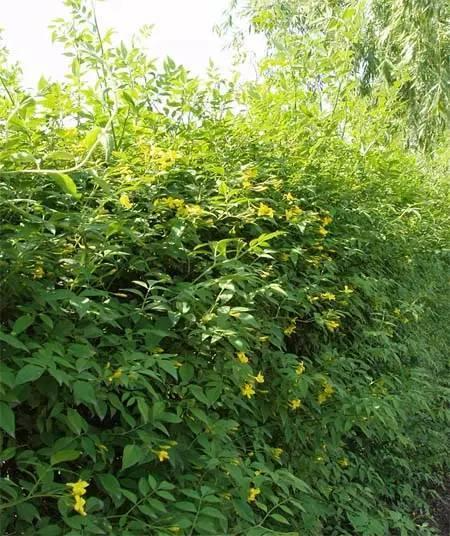
13: Cotoneaster serrata
Morphological characteristics:
This is an evergreen low shrub with branches spread out in two neat rows. Its leaves are small, thickly leathery, nearly rounded or broadly elliptical, with an acute apex and a cuneate base. The margins are entire, and the underside is sparsely pubescent. The flowers are small, sessile, solitary or in pairs, and pink. Blooms from May to June. The fruit is nearly spherical and bright red. Fruiting season is September to December.
Growth habits:
Cotton tree likes a humid environment and is also relatively drought-resistant. If the growing season is not too dry, it can basically grow naturally, but it should be watered with thawing water and freezing water in early spring and early winter.
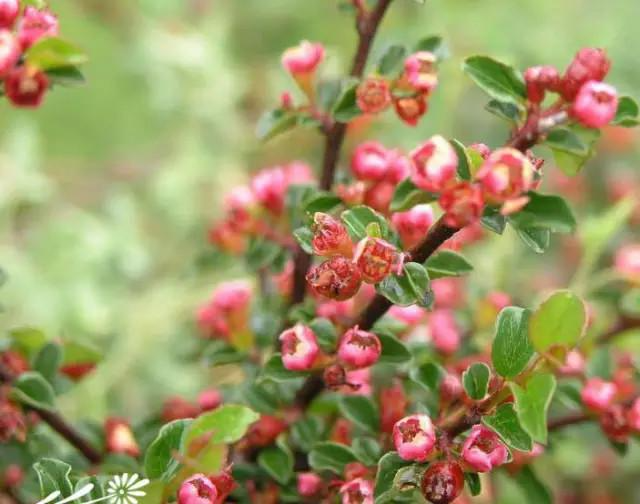
14: Mediterranean Viburnum
Morphological characteristics:
This evergreen shrub belongs to the Caprifoliaceae family. It has many branches and cymes of inflorescence. Its pink buds appear in autumn and do not bloom until the following spring. The flowers are white and are particularly decorative in winter and spring. Its lush foliage is resistant to pruning, and its shape can be compared to that of an oleander. Maintenance and pruning primarily involve thinning, which should be done in late spring after flowering.
Growth habits:
Flower buds are easily differentiated, and flowering is common in one- or two-year-old saplings. If vegetative growth is properly controlled, flowering can also occur in summer or autumn, and group planting can produce flowering plants throughout the year.
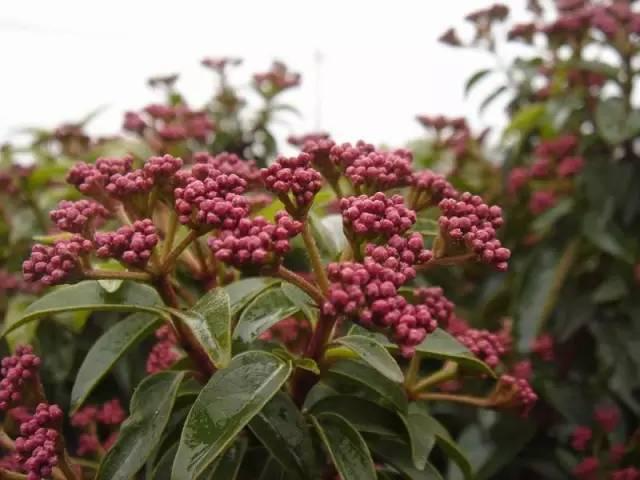
15: Sambucus sambucus
Morphological characteristics:
Elderberry, a member of the Caprifoliaceae family. Its deep pink flowers and purple leaves exude a lemony scent. It is hardy, light-loving, cold- and drought-resistant. It has a well-developed root system and strong germination capacity. Its branches are smooth, hairless, and have lenticels, with a yellowish-brown pith.
Growth habits:
It is light-loving, shade-tolerant, cold-resistant, and drought-tolerant. It thrives and avoids waterlogging. It is suitable for planting lawns near water and forest edges.
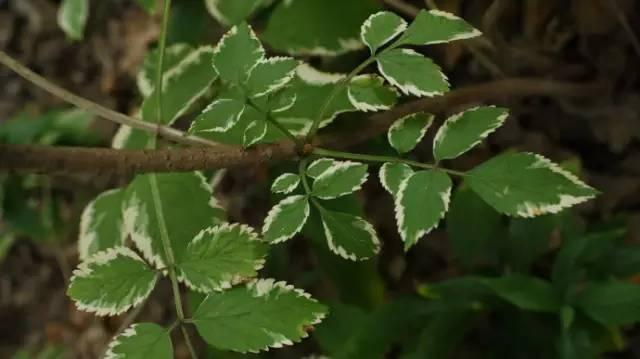
16: Golden Leaf Akebia
Morphological characteristics:
A hybrid of the glutinous rice strip and the single-flowered Abelia genus. This golden-leaved variety can reach 1.5 meters tall and features thin, rounded branches with a purplish-red sunburst and arching shape. The leaves are small, ovate, 2.5-3.0 cm long and 1.2 cm wide, with sparse, lightly toothed edges. They appear golden yellow in sunlight, but turn green in low light. The inflorescence is composed of small, white and pink flowers in a conical cyme. They are lush and fragrant, blooming from June to November.
Growth habits:
It is light-resistant, heat-resistant, and can withstand temperatures as low as -10°C. Even if planted in an open field in Nanjing, it can safely overwinter and has strong adaptability to the soil. It has strong branching ability and strong resistance to pruning. Pruning should be strengthened during the growing season and early spring to prevent the branches and leaves from becoming hollow and to keep the tree plump.
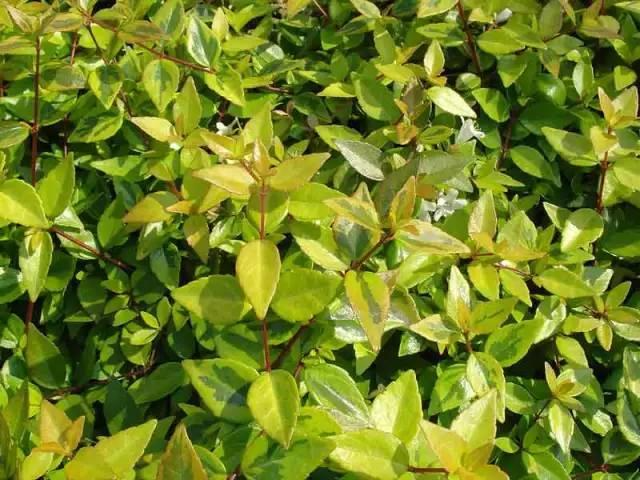
17: Hairy Nucleus Tree
Morphological characteristics:
A deciduous shrub in the genus Caprifoliaceae, it can reach 1.5–2.0 meters in height, with densely arched, soft branches. In the Shanghai area, buds typically appear in early March and leaf out in early December. Its leaves are small, oval, and densely packed. Flowering occurs from July to August, with small, pale pink flowers. After the flowers fade, round berries form, clustered on long, narrow branches. By late autumn, the berries turn red, creating a beautiful sight and a high ornamental value. Fruit continues to bear until early spring, a period lasting four months.
Growth habits:
It has strong adaptability, is cold-resistant, heat-resistant, moisture-resistant, and barren-resistant, has very few diseases and pests, has a strong ability to sprout branches, and after the branches hang down to the ground, they can take root and grow in the internodes.
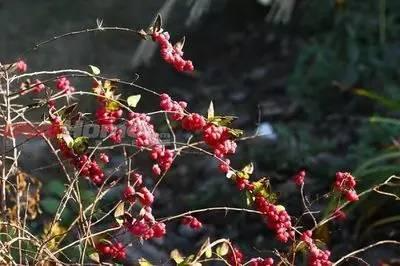
18: Creeping Bright Green Honeysuckle
Morphological characteristics:
The main feature is that it is evergreen all year round and the leaves are bright green.
Growth habits:
It has vigorous growth, strong budding ability, dense branches, and strong resistance to pruning. It is also cold-resistant, withstanding temperatures as low as -20°C and temperatures as high as -10°C. It is not sensitive to light and grows well in full sunlight, but can tolerate shade. It is also not very demanding on soil, adapting to acidic, neutral, and slightly saline soils. Due to these advantages, creeping branches and bright leaf honeysuckle have become the best creeping wood cover plants.
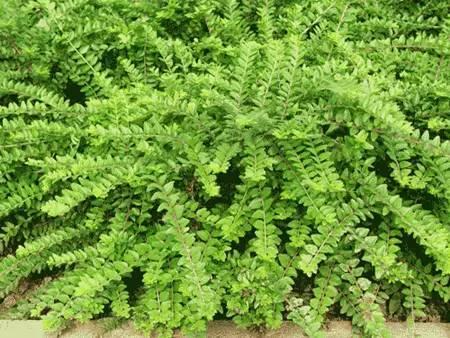
19;Snowball Ice Deutzia
Morphological characteristics:
The plant reaches a height of 0.4 to 0.6 meters, with a crown width of 1.0 to 1.2 meters. It has a hemispherical shape and dense, soft branches. Its single, opposite, lanceolate leaves are bright green, turning red in autumn. Flowers bloom in April and May, forming panicles of small, star-shaped white flowers. The plant is nicknamed "Snowball" because it is densely covered with white flowers during flowering.
Growth habits:
It is light-tolerant and is best grown in well-drained areas.
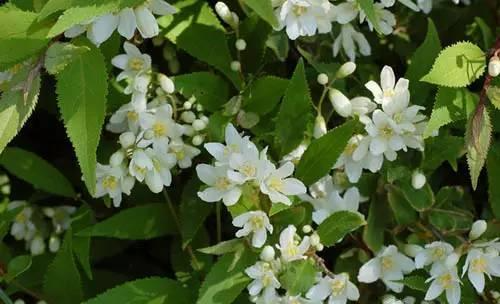
20: Colorful Willow
Morphological characteristics:
Deciduous shrub, 1-3 meters tall, with a spreading crown and new leaves with milky white and pink spots.
Growth habits:
It needs to be lightweight, cold-resistant, moisture-resistant, have great growth potential, and be strong in pruning in late winter.
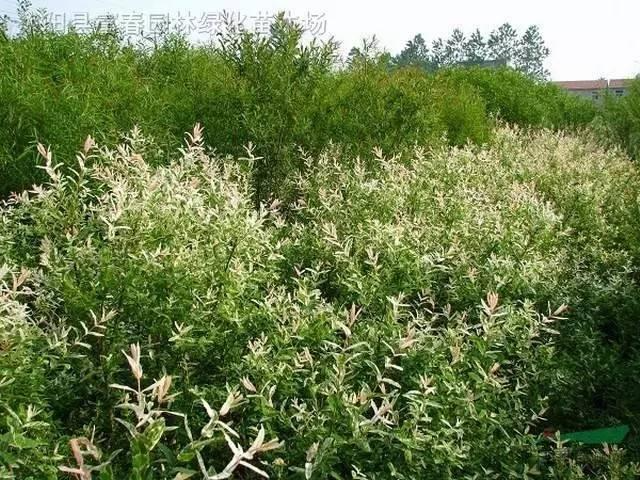
21: Creeping pot grass
Morphological characteristics:
This perennial succulent herb has stony, rooting branches and erect, sturdy, 10-20 cm long branches. Its flowers are pale yellow and bloom from May to June, with fruiting from July to August.
Growth habits:
Grown on rocks on hillsides or cultivated land. Distributed in the north and south of China.
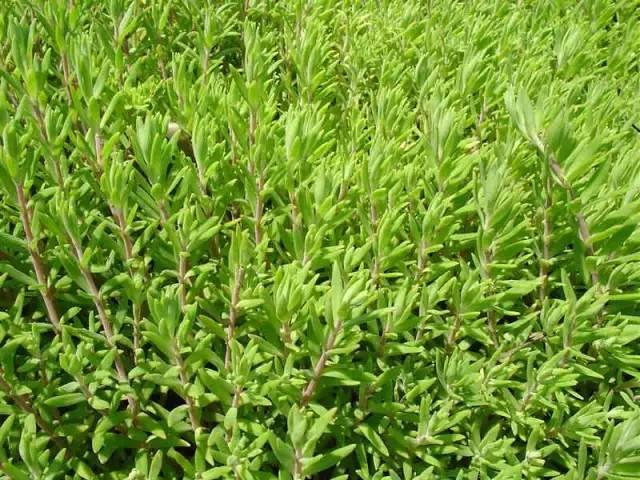
22: German Sedum
Morphological characteristics:
This perennial succulent plant grows 40-50 cm tall in pots. It has white, slightly pink, and thick, light green stems. Its leaves are gray-green, ovate or ovoid, flat, and fleshy, sometimes with a slightly wavy upper edge.
Growth habits:
It likes sunshine, warm, dry and ventilated environment, avoids water and moisture, and has no strict requirements on soil. It is more resistant to cold and drought.
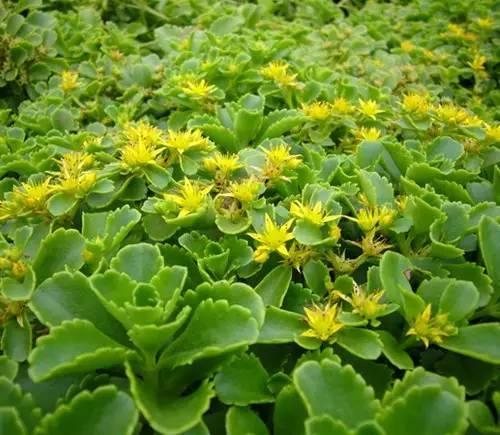
23: Sedum
Morphological characteristics:
A perennial herb, glabrous, blooms from April to May and bears fruit from June to July.
Growth habits:
Buddha grass is highly adaptable, adaptable to any soil, and extremely cold-resistant. A succulent plant with a high water content, the cuticles of its leaves and stems exceptionally prevent evaporation, allowing it to remain water-free even on rooftops during summer droughts. It can withstand droughts for up to a month, while other weeds planted alongside it would have long since dried up and died, yet Buddha grass remains unscathed, maintaining its vibrant green color.
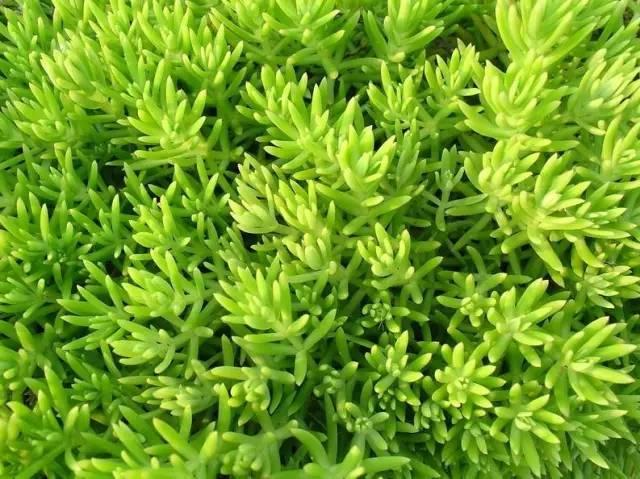
24: Sedum rotundifolia
Morphological characteristics:
A perennial evergreen plant in the family Asteraceae. Its stems are oblique or drooping, thin, rounded, and fleshy. Its leaves are opposite, fan-shaped to rounded, with slightly wavy edges. They are green and reddish, especially older leaves, which are dark purple. The petioles are short, hemispherical, and the flowers are pink.
Growth habits:
It likes a cool, humid and semi-shaded environment, has strong cold resistance, and is not resistant to high temperatures and sunlight in summer. It requires loose and fertile sandy loam.
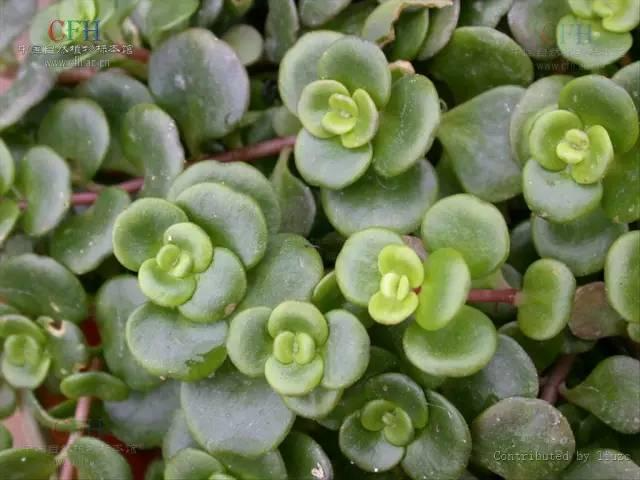
25: Coreopsis macrophylla
Morphological characteristics:
This perennial rhizome grows 30-60 cm tall. Its stem is erect and multi-branched. Its flower heads are 4-7.5 cm in diameter, with long petioles and rounded ray-shaped florets at the edges. The remaining flowers are tubular. The ray-shaped flowers are typically eight in number, yellow, and have three petals at the top; horticultural species have double petals (multiple rounded ray-shaped flowers). Achenes are round with broad, thin membranous wings. Blooms from June to August.
Growth habits:
It is not very demanding on soil, it likes fertile, moist and well-drained sandy loam and can withstand drought, cold and high temperatures.
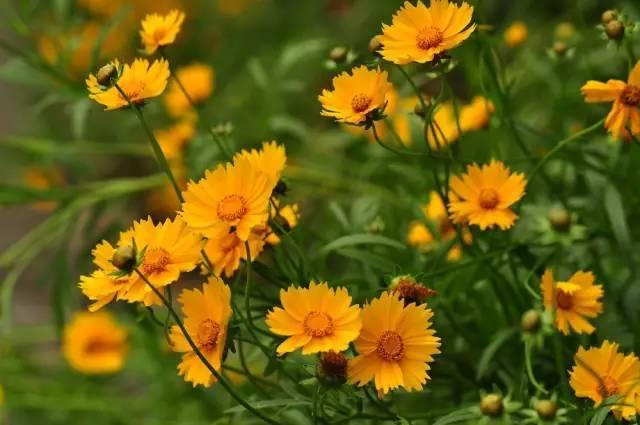
26: Double Coreopsis
Coreopsis tinctorius, Asteraceae, evergreen, double yellow flowers, taller plants. Coreopsis tinctorius is short. Other characteristics are the same as Coreopsis tinctorius.
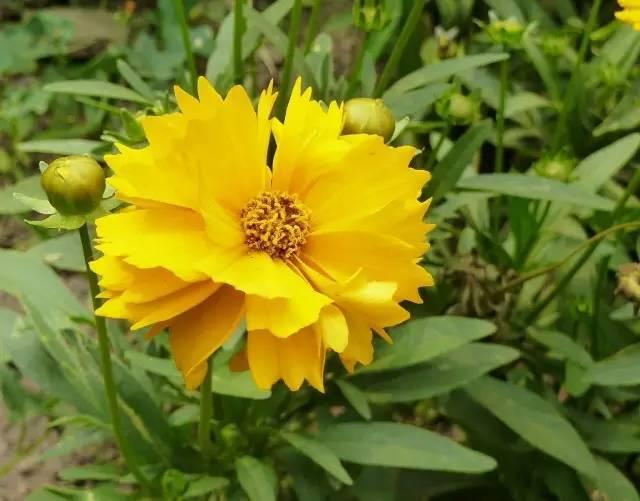
27: Shasta daisy
Morphological characteristics:
This perennial herb has stems 40 to 100 cm tall. Its basal leaves are lanceolate with long petioles, while the stems and leaves are sessile and linear. The inflorescence is solitary, with fragrant, white ligulate flowers on the top. The bisexual tubular flowers are yellow. It blooms from June to July; the achenes ripen from August to September.
Growth habits:
It loves sunlight and is suitable for growing at temperatures between 15 and 30°C. It can grow in any soil, garden soil, sandy loam, slightly alkaline or slightly acidic soil.
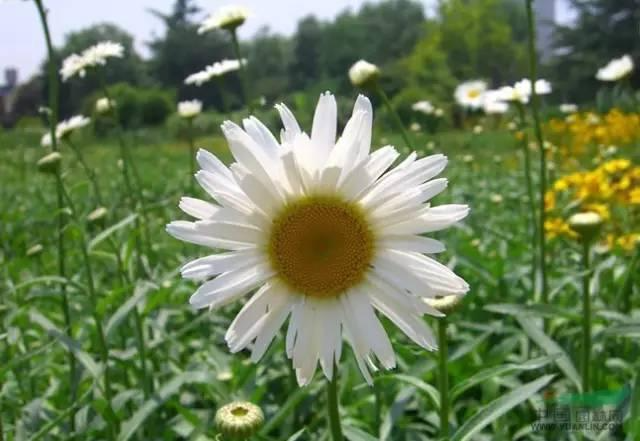
28: Golden Chrysanthemum
Morphological characteristics:
Annual or perennial herb with pinnate lobed leaves and white flowers with yellow centers, blooming in summer. The whole plant is fragrant, and the leaves have a slightly grassy and apple aroma.
Growth habits:
Full sun, well-drained sandy loam or deep soil, neutral or slightly alkaline soil.
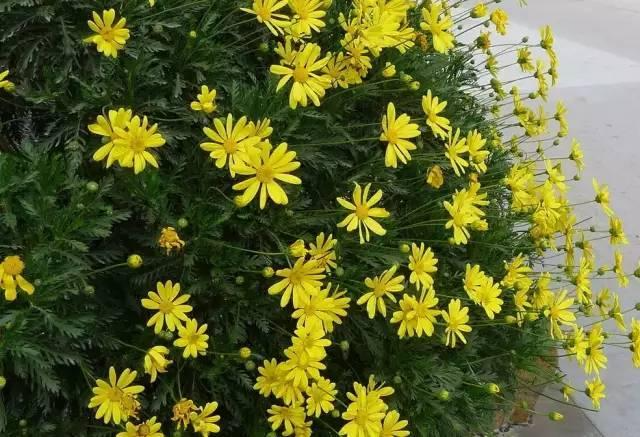
29: Artemisia selengensis
Morphological characteristics:
Artemisia is a perennial herbaceous plant in the Asteraceae family, sometimes forming a semi-shrub. Its taproot is woody and slopes downward; its rhizome is thin or slightly thick, creeping or slopes upward, with nutrient branches and densely packed nutrient leaves. The stems, branches, leaves, and the undersides of the bracts are densely covered with silvery-white or light grayish-yellow, slightly silky hairs. Its slender, silvery-gray-green leaves make it an excellent edging plant or groundcover, suitable for use in flower beds or borders.
Growth habits:
It is resistant to pruning and has strong germination ability; it enjoys good lighting and avoids high temperatures and heavy rains in summer; it can be used in perennial flower beds, flower borders or forest edges.
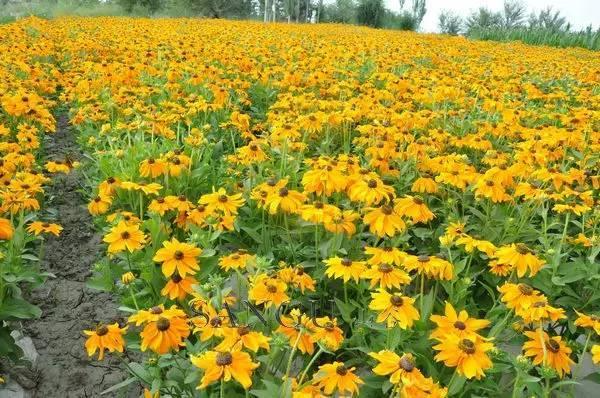
30: Golden Plate Phoenix Tail Achillea
Characteristics: A perennial semi-evergreen ground cover plant, a perennial herb, 40-50 cm tall. Leaves are amplexicaul, alternate, pinnately compound, elliptic-lanceolate; the leaflets are pinnately lobed, with downward-extending, fragrant petioles. Flower heads are densely packed into umbrellas exceeding 10 cm in diameter. The ligulate flowers are yellow, blooming from July to August, and fruiting from August to September. Cultivars and varieties come in red, pink, dark yellow, and white.
Growth habits:
Not tolerant to water and moisture, umbel-shaped inflorescence, yellow flowers, blooms no more than 80 cm or more.
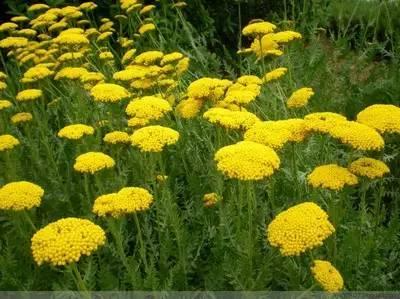
31: Achillea millefolium
Morphological characteristics:
The ligulate flowers are white, and the tubular flowers are yellow, pink or purple-red. The flowering period is from June to August.
Growth habits:
It has low requirements for soil and climate conditions, is very tolerant of thin ridges, and grows well in semi-shaded areas. It is drought-tolerant, especially in summer, requires less water, and is a "water-saving plant" in urban greening. Excessive water will lead to excessive growth and tall plants. If water accumulates, it will cause root rot. Therefore, good drainage conditions are recommended.
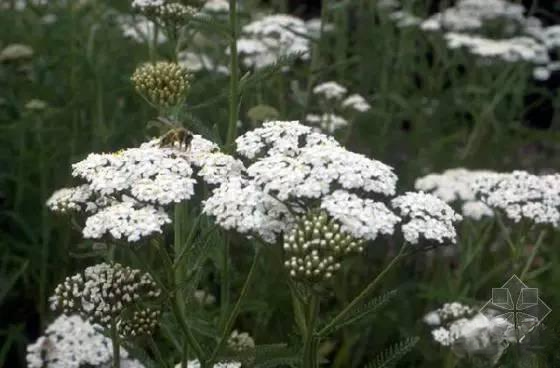
32: Perennial chrysanthemum
Morphological characteristics:
This perennial herb, 50-90 cm tall, is densely covered with coarse, stiff hairs. Leaves are alternate and wavy-pinnate. The inflorescence is 5-7 cm in diameter at the top of the stem. The ligulate flowers are yellow and purple above, while the tubular flowers are purple-brown. Achenes are densely hairy.
Growth habits:
It is strong in nature, heat-resistant and drought-resistant, and prefers a sunny, well-ventilated environment and well-drained soil; in moist and fertile soil, it has fewer flowers, more leaves and more seedlings.
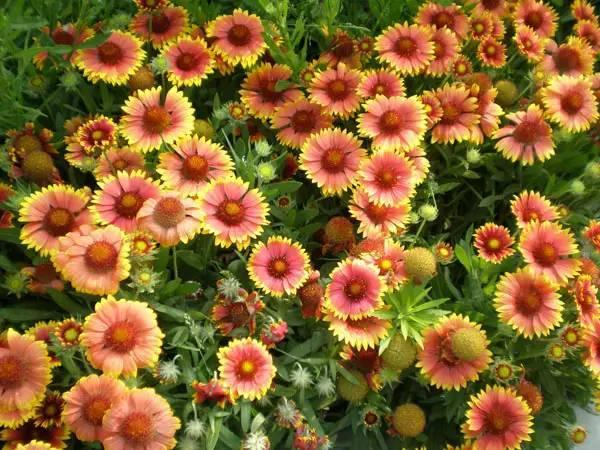
33: Yaju
Morphological characteristics:
A dense, evergreen subshrub with silvery-white leaves and abundant golden-yellow flowers in late autumn. Origin: Originated in Japan, but also found in the former Soviet Union and North Korea.
Growth habits:
It has strong adaptability, heat resistance and cold resistance. It can survive the winter in open air places in Shanghai.
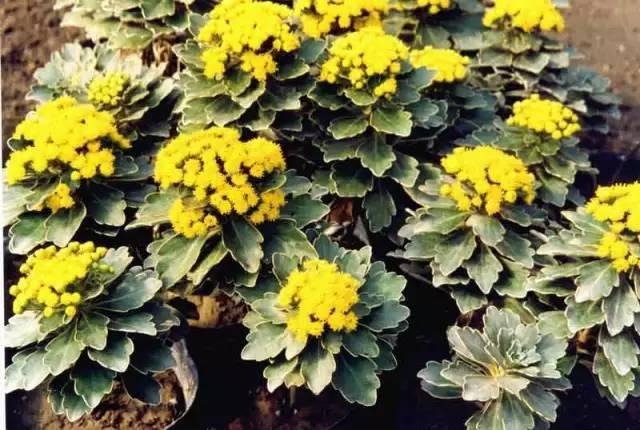
34: Scented chrysanthemum
Morphological characteristics:
Aster is a semi-evergreen perennial herb in the Asteraceae family that blooms from August to October.
Growth habits:
It is light-loving, cold-resistant, drought-resistant, and has good drainage. It is suitable for arranging flower borders, flower beds, and potted plants.
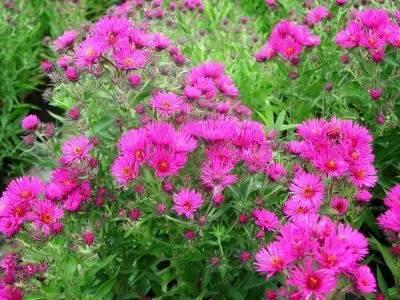
35: Silver Chrysanthemum
Morphological characteristics:
This evergreen perennial herb has dense branches and foliage, soft new shoots with grayish-white pubescence, and silvery-gray yellow flowers. It thrives in bright sunlight and tolerates heat, but avoids damp soil and waterlogging. In cool, humid conditions, its leaves develop a light green hue. Its button-like yellow flowers bloom from June to July.
Growth habits:
It is drought-resistant, barren-resistant, heat-resistant, pruning-resistant, and aromatic. Its unique leaf color can also bring a cool feeling to the hot summer.
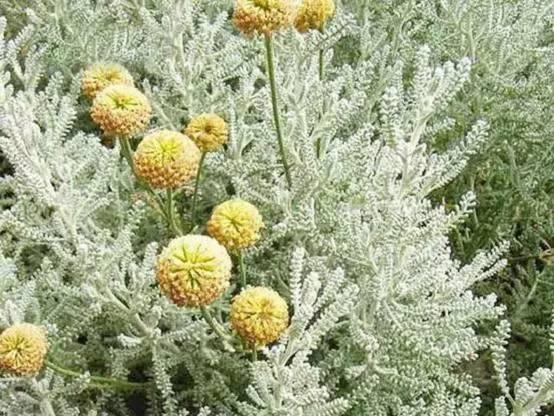
36: Purple Ball Dutch Chrysanthemum
Morphological characteristics:
A perennial herb of the Asteraceae family, with purple flowers that bloom in summer, 50-60 cm tall;
Growth habits:
It is cold- and drought-tolerant, with good drainage. Suitable for flower beds. It is a perennial herb.
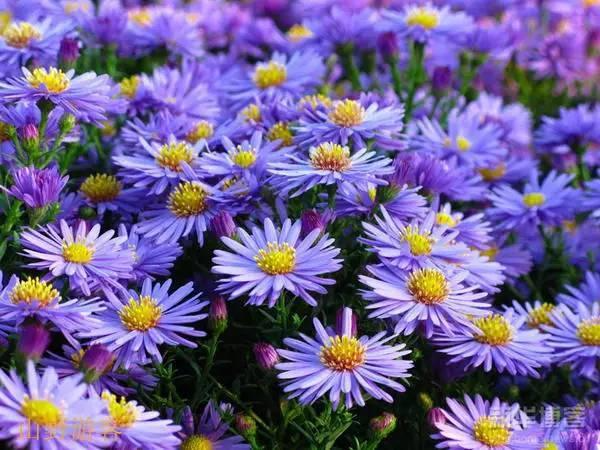
37: Echinacea
Morphological characteristics:
Echinacea is a perennial herbaceous plant in the Asteraceae family, 60-150 cm tall, with coarse hairs throughout and erect stems. Its basal leaves are ovate or triangular, while its stem leaves are ovate-lanceolate, with petioles slightly clasping the stem at their bases. Its inflorescences are solitary or clustered at the tops of branches, with a diameter of up to 10 cm. Its ray-shaped flowers are purple-red, while its tubular flowers are orange-yellow. It blooms from June to July.
Growth habits:
It is found in North America and is cultivated in many parts of the world. It is somewhat cold-tolerant and prefers warm and sunny locations. It prefers deep, fertile, organic soil.
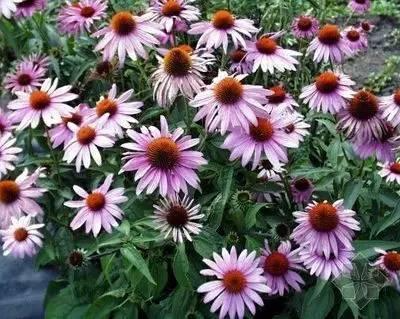
38: Chishan Powder
Morphological characteristics:
This perennial herb grows in clumps, reaching 50 cm in height. The branches, petioles, and midribs of young plants are purple-red in spring, while mature leaves are green in summer with rusty red spots in the center. The leaf margins are purple-red. The inflorescence is constant. Pink or white flowers bloom at the top of the stem. Flowering occurs from July to August, followed by the production of black, ovate achenes.
Growth habits:
It is light-loving and can also tolerate shade, cold and barrenness.
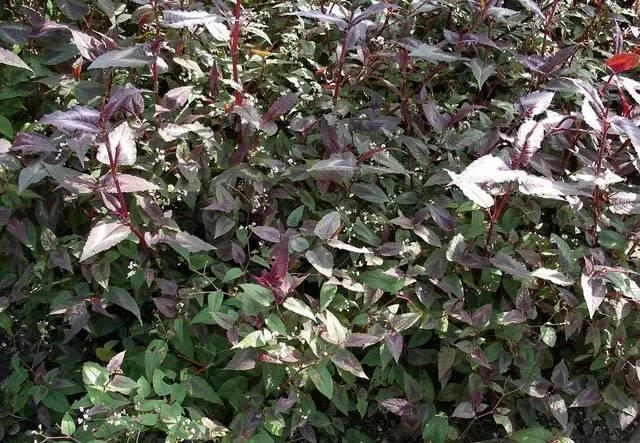
39: Orchid
Morphological characteristics:
This plant, also known as Aspidistra or Aspidistra, belongs to the Liliaceae family and the genus Aspidistra. Its underground part has a thick rhizome. The petioles grow directly from the rhizome. Each leaf has a straight, slender petiole. It grows in an ascending pattern.
Growth habits:
Love likes warmth, humidity, tolerance to barrenness, intolerance to cold, extreme tolerance to shade, such as sandy loam, loose, fertile and well-drained.
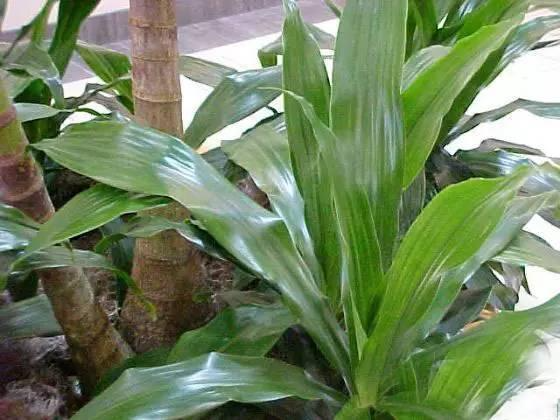
40: Beautiful Evening Primrose
Morphological characteristics:
The roots are cylindrical, the stems are erect, and the seedlings are rosettes with long red hairs at the base. The leaves are alternate, with stalks at the bottom and sessile at the top. The leaves are oblong or lanceolate, with finely serrated white pubescent margins. The flowers are solitary in the axils of the branches, arranged in sparse spikes, and the calyx tube is slender. White to pink
Growth habits:
It has strong adaptability, acid and drought resistance, and has no strict requirements on soil. It can grow on loose soils that are neutral, slightly alkaline, or slightly acidic. However, if the soil is too wet, the roots will easily become sick.
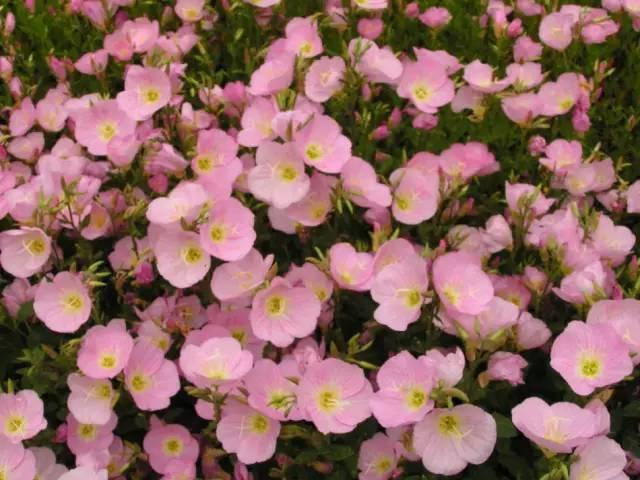
41: Willow Saddle Grass
Morphological characteristics:
This perennial herb is from the Verbenaceae family. Its upright, dark green leaves are clustered at the base. Its stems are erect, slender, and tough. Its terminal inflorescences contain small, bluish-purple flowers, with a crown diameter of 60 cm. They bloom in summer and autumn. Verbena's swaying figure and delicate, lush flowers offer a long viewing period. Flowering plants can reach up to 1.5 meters in height. Despite their height, they remain stable and their soft coloration makes them ideal for combining with other plants, making them a perfect backdrop for floral borders.
Growth habits:
Verbena prefers warm climates. Its optimum growth temperature is 20-30°C. It is not cold-tolerant and grows slowly below 10°C. It thrives best in full sun. If planted in insufficient sunlight, it will not thrive. It blooms year-round, with a long blooming period and high ornamental value. It blooms well in spring, summer, and autumn, but blooms poorly or not at all in winter. It requires moderate soil, good drainage, drought resistance, and moderate water requirements.
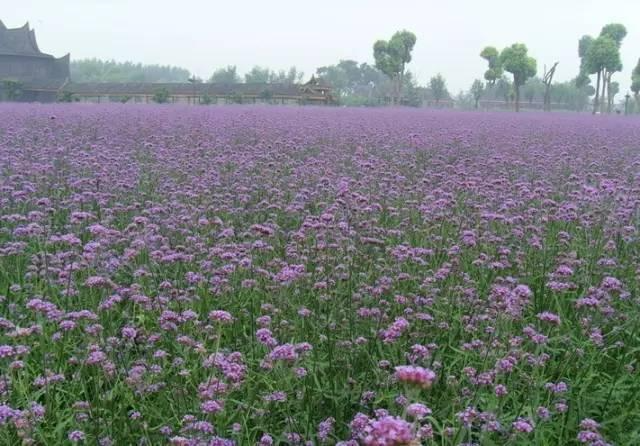
42: Perennial Verbena
Morphological characteristics:
The stems and leaves are capillary, and the branches and leaves are creeping. The leaves are opposite, deeply pinnate in two times, and the flowers are terminal, densely corymbose, pink in the center, and the small flowers are densely clustered and very delicate. The flowering period is from spring to autumn.
Growth habits:
It is now found in Brazil, Uruguay, and other parts of South America where it originated. This plant prefers warm, humid climates and is somewhat cold-resistant. It prefers sunlight and tolerates little shade. It is not very particular about soil, but prefers fertile loam. Poor soils will result in fewer flowers. It blooms from May to October, with most flowers being cross-pollinated.
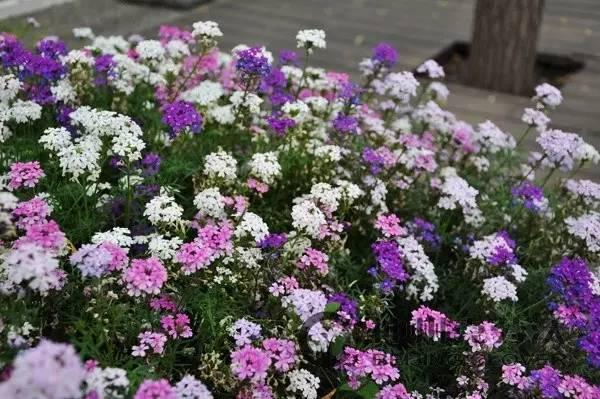
43: Houttuynia cordata
Morphological characteristics:
It is a perennial herb growing to 30–50 cm in height. The entire plant has a fishy smell. The stem is erect at the top, usually purplish-red, while the lower part creeps, with rootlets at the nodes. The leaves are alternate, thin, papery, and glandular, especially on the abaxial surface. They are ovate or broadly ovate, 4–10 cm long and 2.5–6 cm wide, with a cordate base, entire margins, and purplish-red abaxially.
Growth habits:
It grows in ditches, streams and moist sparse forests. It is distributed in various places in Shaanxi, Gansu and the south of the Yangtze River Basin.
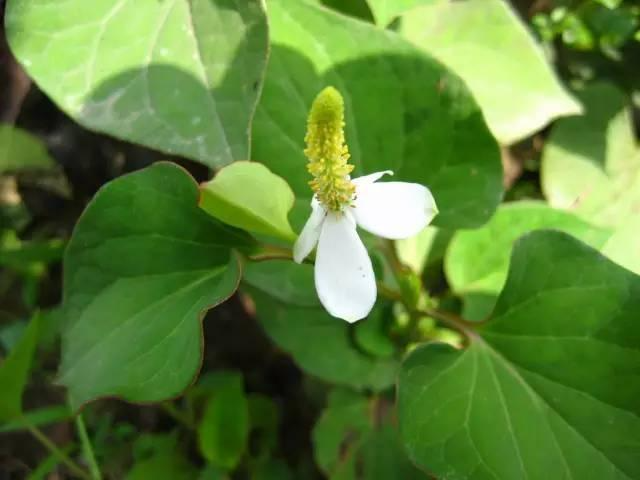
44: Purple Leaf Duck Celery
Morphological characteristics:
It is a horticultural cultivar of the genus Apiaceae in the family Apiaceae and is a perennial herb that blooms from April to May.
Growth habits:
The suitable growth temperature for duck celery is an average daily temperature of 10-25℃. Its plant height growth and new leaf basal growth are very fast, but it is not resistant to high temperatures. Growth slows down significantly above 25℃. The lower leaves begin to turn yellow, but it is more resistant to low temperatures. Duck celery does not require high light intensity, but under low temperature conditions, excessive light will not have an adverse effect on it. When high temperatures are accompanied by strong light, the plant is prone to yellowing. Duck celery does not have strict requirements for soil. It is suitable for fertile soil rich in organic matter, loose structure, good ventilation, humid environment, and slightly acidic sandy loam.
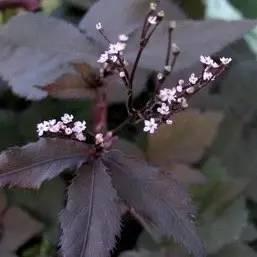
45: Ground Cover Dianthus
Morphological characteristics:
The genus Dianthus is a perennial herbaceous plant of the Caryophyllaceae family. The plant grows in clusters, with flat stems, leaves 5 cm long and 0.1-0.2 cm high, dark green, smooth, slightly powdery white, and umbels at the end. The flowers are dark red, dark pink, white, and double-flowered.
Growth habits:
Dianthus is extremely drought-tolerant, and its water needs can be met by natural rainfall. Therefore, when it comes to water management, it's important to adhere to the principle of preferring dryness to wetness. As long as the plant isn't dying from drought, there's no need to water it. Most areas experience spring drought, so a quick spring watering is very beneficial to the growth and flowering of dianthus.
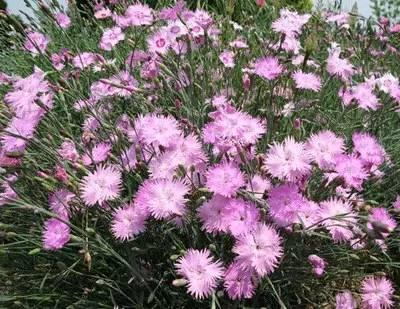
46: Golden Leaf Acorus
Morphological characteristics:
This evergreen herb has a fragrant aroma throughout the plant. It grows 20-40 cm tall, with leathery, shiny, strap-shaped leaves striped with yellow. The inflorescence is a yellow-green spadix. It blooms from April to May.
Growth habits:
Like a humid environment, slightly resistant. Strong adaptability and strong growth.
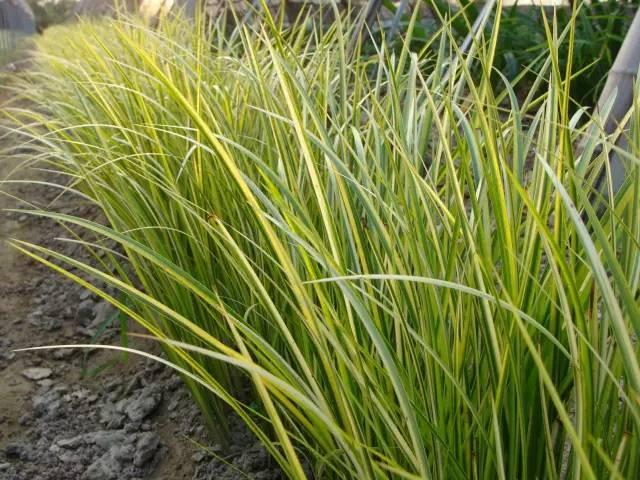
47: Bell Willow
Morphological characteristics:
This annual or cultivated perennial herb reaches 50 cm in height and is covered in hairs. It grows in clusters with erect stems. Its leaves are alternate and lanceolate. The flowers are solitary or borne in clusters of three or four in the leaf axils and along the stem, forming terminal panicles. The cone-shaped flowers come in a variety of colors, including red, purple, and white. It blooms from May to October.
Growth habits:
Like a warm, well-lit and ventilated environment. Avoid high temperatures and drought in summer.
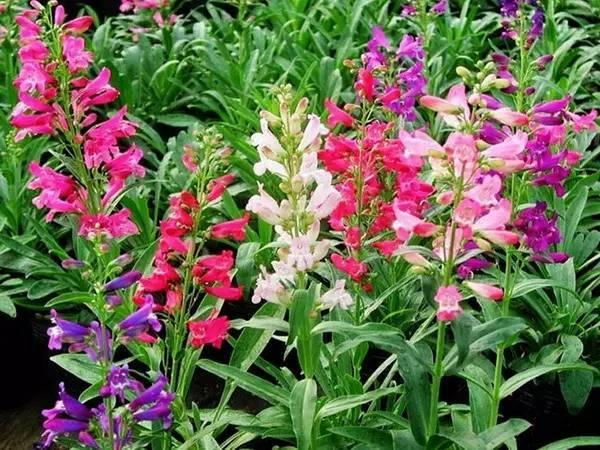
48: Chinese Sedum
Morphological characteristics:
Evergreen, with dense, gray-green leaves, growing rapidly. Dense, gray-green leaves, growing rapidly. White flowers, blooming from May to June.
Growth habits:
Happy light, suitable for the construction of ground covers, roofs, flower borders, etc.
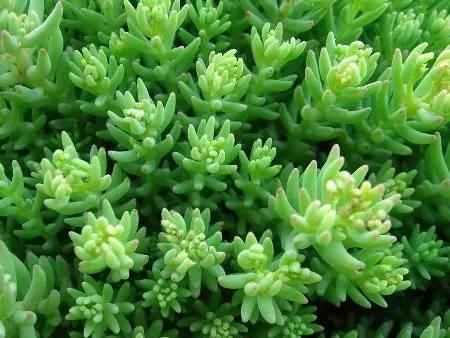
49: Red Ice Flower
Morphological characteristics:
This perennial succulent herb or subshrub has thick, fleshy, cylindrical leaves. Its spring blossoms are dense, pink, and in full bloom, they are incredibly beautiful and spectacular. It's best planted against stone walls and slopes in courtyards to create a beautiful landscape. It's also suitable for potted plants.
Growth habits:
The stems are elongated, spreading or climbing. Sex prefers cold weather, avoids high temperatures and humidity, is drought-resistant, and prefers sunlight. Fertile and well-drained sandy loam is better.
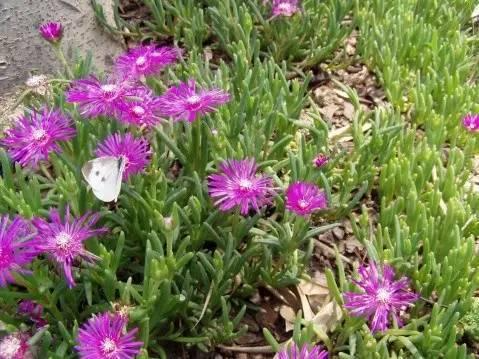
50: Jade Belt Grass
Morphological characteristics:
The roots are thick and knotty. The stems are 1 to 3 meters tall, thick and almost woody. The leaves are 1 to 3.5 centimeters wide. The spikelets are 10–40 centimeters long, typically containing 4–7 florets. The inflorescence resembles a broom. The leaves are alternate, arranged in two rows, curved and pendulous, and striped with white. Above ground, the stems are straight, with internodes, resembling bamboo.
Growth habits:
It commonly grows near rivers, ponds, and lakes, often growing over large areas to form reeds. It tolerates humidity better than cold, as does temperature and light. It requires protection during the winter in northern areas. It can be cultivated in a wide variety of locations and can be grown in open fields or potted for ornamental purposes. During the growing season, care should be taken to remove weeds and maintain humidity. No special maintenance is required.
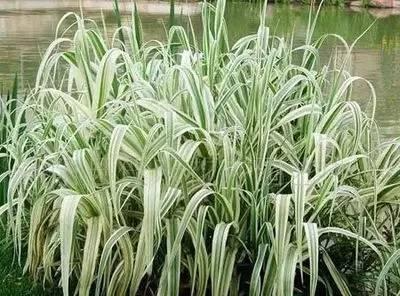
51: Pennisetum
Morphological characteristics:
The plant is lush and compact, with a height of about 250 cm. The root system is well developed and dense, with an average root count of 12.7 and a maximum of 20. The spikes have 4-6 tillers, and the stems are upright, round, and have short internodes. There are many leaves, 17 on the main stem, lanceolate, 67.2 cm long, soft, smooth, and disease-free; the spikes
Growth habits:
Strong adaptability.
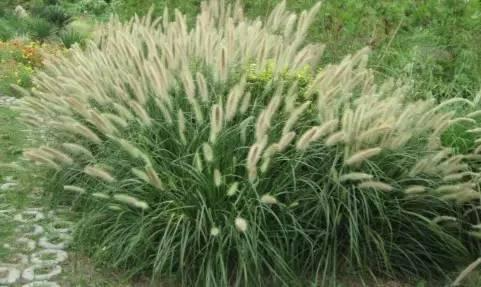
52: Spotted Leaf Awake
Morphological characteristics:
Variegated Miscanthus is a unique group of Miscanthus species, with markings running transversely across the leaves rather than running vertically. The earliest Miscanthus species, M. s. 'Zebrinus', forms loose, arching clumps up to 2.4 meters tall, and with extended growth, can reach a canopy width of several meters. The formation of markings is affected by temperature. In early spring, when temperatures are cool, the markings are often absent. In high temperatures, the markings weaken and the plant withers and turns yellow.
Growth habits:
Happy light, half shade resistance, strong sex, strong resistance.

53: Miscanthus
Morphological characteristics:
The color of the flowers is initially red, and in autumn, from September to October, it turns silvery white.
Growth habits:
Tolerates partial shade, drought, waterlogging, dryness, and humidity. Free from pests and diseases. Part of the ground dies back in winter.

54: Silver Edge
Morphological characteristics:
The plant is 60 to 100 cm tall, and the leaf surface has white vertical stripes.
Growth habits:
Happy light, half shade tolerant, cold tolerant, drought tolerant.
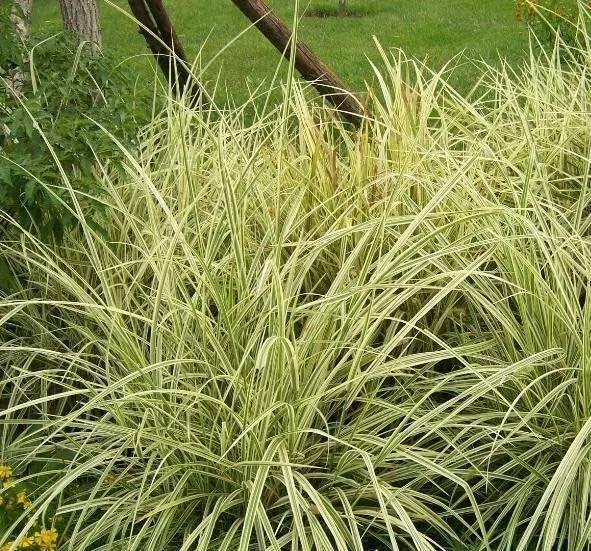
55: Dwarf pampas grass
Morphological characteristics:
An evergreen perennial herb, 120 cm tall, with long, narrow leaves clustered at the base, finely toothed on the sides, and silvery-white panicle inflorescences, pinnate in shape.
Growth habits:
It is light-loving, cold-tolerant, and requires well-drained soil. It is a well-known ornamental grass abroad. It is used for landscaping or support.
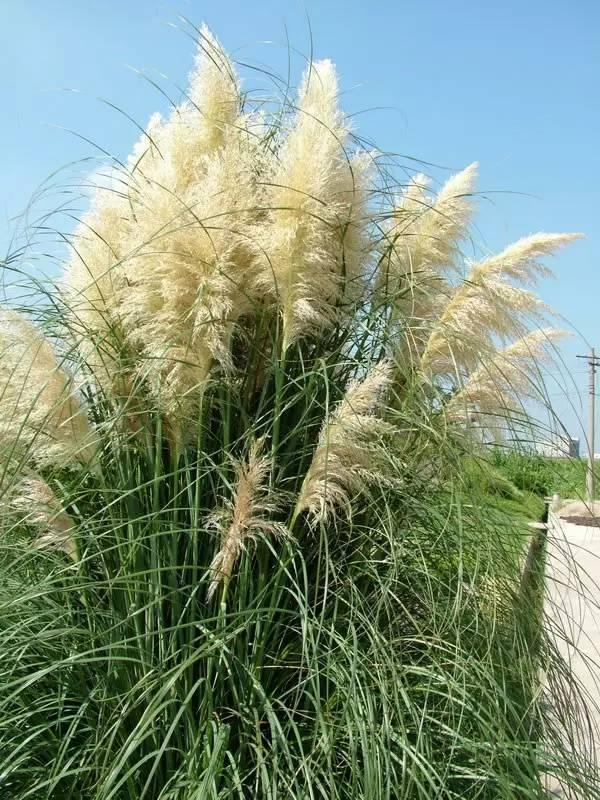
56: Pampas grass
Morphological characteristics:
The stems are clustered and dioecious. The leaves, mostly at the base, are very narrow, about 1 meter long and 2 cm wide, drooping, with finely serrated edges, gray-green, and short hairs. The panicles are large, with the corolla of the female flowers being silvery-white and shiny, with dense filiform hairs at the cob nodes. The spikelets consist of 2-3 flowers. The tassels are broad and weak, towering. Flowering occurs from September to October.
Growth habits:
Dwarf Pampas is hardy and cold-resistant, preferring a warm, sunny and humid climate.
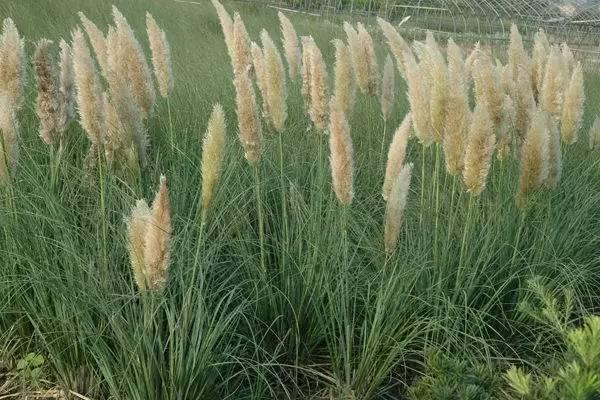
57: Stipa tenuifolia
Morphological characteristics:
A mesotropic grass, a typical grassland plant.
Growth habits:
Its ecological range is narrow, generally growing on steep, sunny slopes of mountains at altitudes between 1,200 and 1,700 meters. Its soil is dark chestnut-calcium, rich in surface organic matter, and possesses strong water-retention properties. Stipa macrophylla is drought-tolerant. Its thin stems, curled leaves, and short growing season allow it to quickly complete its life cycle in early summer to adapt to the arid climate. Its growing season is short, with greening in mid-April, heading in mid-May, and maturity in mid-June. The leaves remain green even after the seeds mature.
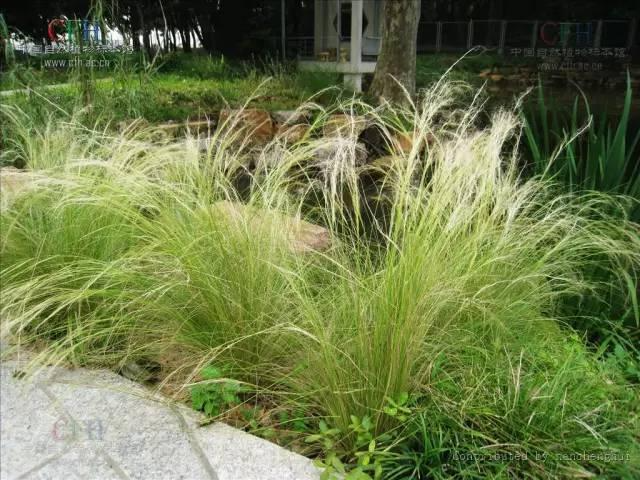
58: Golden Leaf Carex
Morphological characteristics:
This perennial herb reaches 20 cm tall. Its leaves are striped. The sides of the leaves are green. The center is yellow and has spikes. It blooms from April to May.
Growth habits:
Like light, can tolerate semi-shade, not waterlogged, and has strong adaptability.
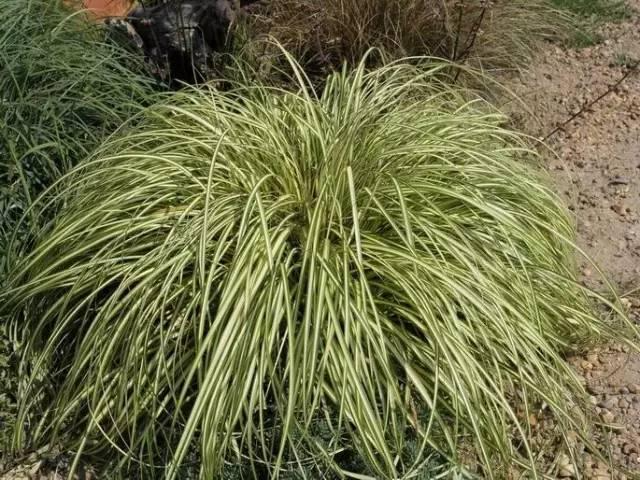
59: Blue Moss
Morphological characteristics:
Evergreen blue-gray leaves, recommended planting density: 25 plants/square meter.
Growth habits:
Strong adaptability.

60: Carex striata
Morphological characteristics:
Evergreen, perennial herb with strap-shaped leaves, dark green, shiny, and spike-shaped inflorescences.
Growth habits:
It is moist like light, often grows in streams, and is more cold-resistant. It can be used as an evergreen aquatic plant.
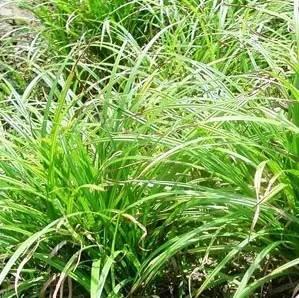
61: Japanese Blood Grass
Morphological characteristics:
Perennial, dormant in winter; leaves: clustered, sword-shaped, often remain dark red, panicles, silvery white spikelets, bloom in late summer.
Growth habits:
It prefers sun or dappled light. It is heat tolerant and prefers moist, well-drained soil. It is an excellent colorful ornamental grass.
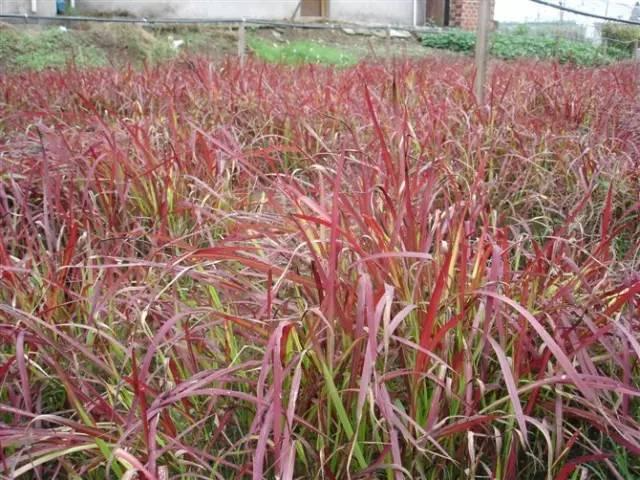
62: Rose
Morphological characteristics:
This is an evergreen or semi-evergreen low shrub with spiny stems and odd-pinnate leaves. It blooms year-round. Its flowers are often deep red, pink, or sometimes white. Its flowers, roots, and leaves are all used medicinally. Its natural flowering period is from May to November. Its flowers are large and fragrant. They are widely used in gardening and as cut flowers.
Growth habits:
It is highly adaptable, cold-resistant, and drought-resistant. It has no strict soil requirements, but a well-drained, acidic sandy loam with rich organic matter is preferred. It prefers sunlight, but excessive direct sunlight is detrimental to bud development. Petals can easily burn, so it prefers warmth. Generally, temperatures between 22 and 25°C (72 to 80°F) are optimal for flower growth. High summer temperatures are detrimental to flowering.
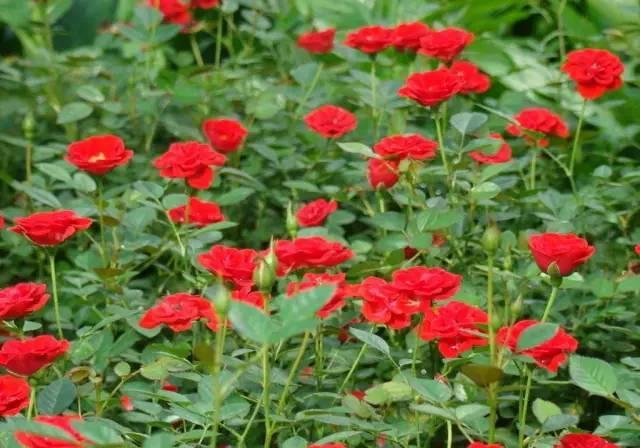
63: Poppy
Morphological characteristics:
This perennial herb is 30 cm tall, growing in clumps and is nearly stemless. Its leaves are rooted and 15 cm long, and its stems have lobed or semi-cleft leaves. Its flowers are solitary on leafless stalks and are white, orange, or light red, 7.6 cm in diameter and covered with bristles. It is found in the Arctic regions of both Central Asia and North America. It is widespread.
Growth habits:
It grows in forests, forest edges, and hillside grasslands and is cultivated in many provinces.
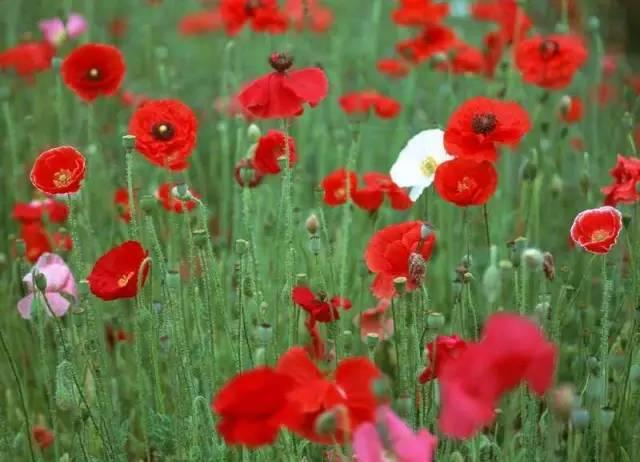
64: Geranium
Morphological characteristics:
Young geraniums are fleshy herbs, while older plants are semi-lignified. Their leaves are opposite and round, kidney-shaped, or fan-shaped. The flowers come in umbels of white, red, purple, pink, and orange, making them suitable for all seasons. They bloom most abundantly in spring. Geraniums are a popular window sill ornamental plant in the West, particularly in continental Europe, such as Germany and Austria.
Growth habits:
It prefers a warm, humid, and sunny environment. It has poor cold tolerance and is sensitive to moisture and high temperatures. The optimal growing temperature is 13-19°C from March to September, and 10-12°C in winter. It is semi-dormant from June to July, so watering should be strictly controlled. It is suitable for fertile, loose, and well-drained sandy loam. Winter temperatures should not drop below 10°C, but it can tolerate temperatures of 5°C for short periods. Single-petal varieties require hand pollination to increase fruit set. Seeds mature approximately 40 to 50 days after flowering.
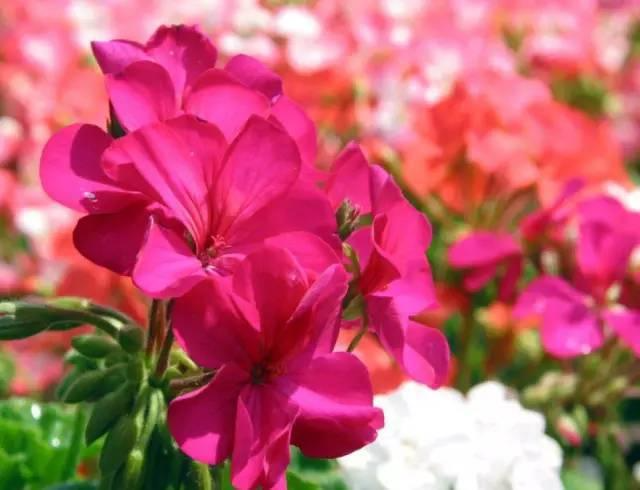
65: Kale
Morphological characteristics:
This biennial herb is a horticultural variety of the edible Brassica oleracea (Brassica napus). After one year of cultivation, it forms a rosette of leaves. After a low winter temperature, they flower and bear fruit the following year. The inflorescence is terminal, with insect-pollinated flowers blooming from April to May. The fruit is a long, oblate silique with round, brown seeds weighing approximately 4 grams per 1000 grams. Horticultural varieties come in various forms, ranging from tall to short in height. The leaf shape can be divided into wrinkled, non-wrinkled, or deeply lobed varieties. The leaf margins vary in color, from emerald green, dark green, gray-green, and yellow-green. The center leaves can be pure white, light yellow, flesh-colored, rose-red, or purple-red.
Growth habits:
It prefers cold climates, is very cold-resistant, can withstand many short-term frosts, has strong heat tolerance, strong growth potential, is easy to cultivate, loves sun exposure, tolerates salt and fertile soil. The suitable growth temperature is 20℃~25℃, and the suitable temperature for seed germination is 18℃~25℃.
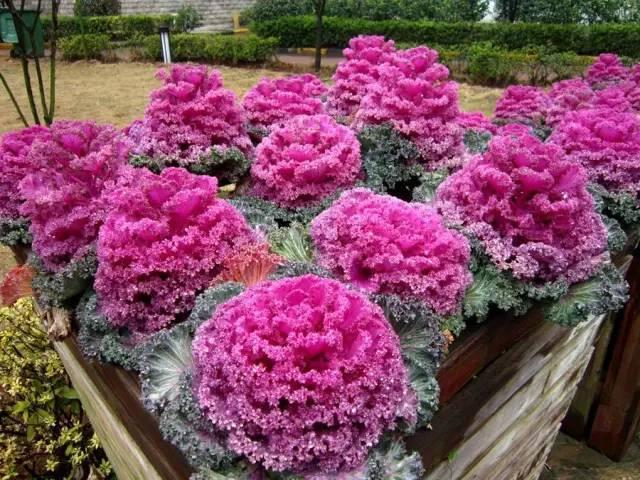
66: Five-Colored Grass
Morphological characteristics:
This perennial herb reaches a height of 15-20 cm, reaching a maximum of 90 cm. It is usually woody and has few branches. Its leaves are opposite, ovate, and have markings on the surface. Depending on the variety, they may have yellow, red, purple, orange, or green markings. Flowers bloom in panicles in summer and autumn, with small, light blue or whitish flowers.
Growth habits:
It prefers full sun with slight shade and prefers warm, humid conditions with a chill. It is not drought-tolerant and waterlogged; in a greenhouse maintained at approximately 15-20°C in winter, it can suffer chilling damage. High temperatures and scorching summer weather are also detrimental to its growth, so spray water regularly to reduce the temperature. It thrives best in fertile, dry, and well-drained sandy soil. This plant is highly adaptable and tolerates temperatures above 10°C in winter and slightly shaded in summer. It prefers full sun, which produces bright, vibrant leaves.
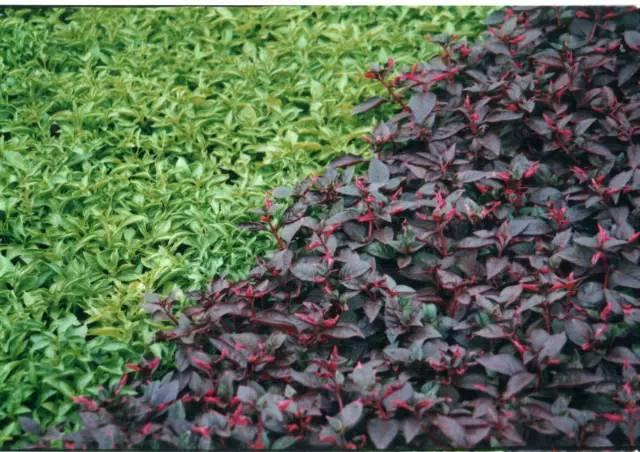
67: Blue Fescue
Morphological characteristics:
This cool-season plant grows in clusters, about 40 cm tall and 40 cm in diameter. Its leaves are erect and smooth, strongly tapering to needle-like or hairy, bluish-green with a silvery-white frost. They are blue in spring and autumn. The inflorescence is a 10 cm long panicle, blooming in May.
Growth habits:
It is light-loving, cold-tolerant, drought-tolerant, and infertile. It thrives best in loose, neutral or slightly acidic soil and is slightly tolerant of salt and alkali. It thrives in full sun or partial shade, avoiding low-lying water. It tolerates temperatures down to -35°C and should be watered regularly during periods of prolonged drought.
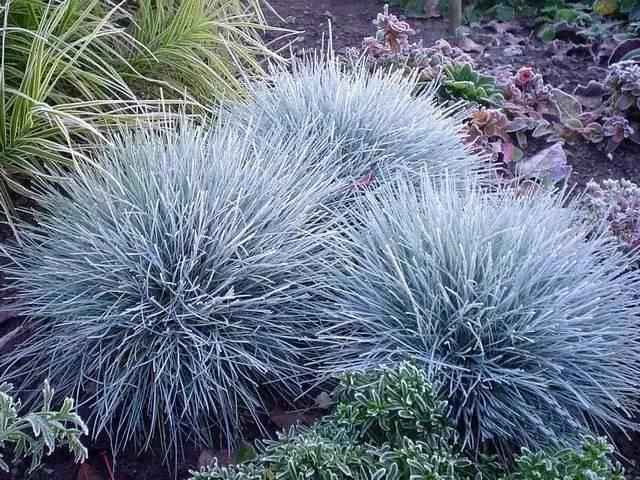
68: Golden Ligustrum lucidum
Morphological characteristics:
Ligustrum lucidum has larger leaves, while Ligustrum lucidum has slightly smaller leaves. The leaves are single, opposite, oval or ovate-elliptical, and 2 to 5 cm long. They bloom in June and fruit in October. The drupes are broadly oval, purple and black. Ligustrum lucidum's golden leaves leave a golden hue, especially in spring and autumn.
Growth habits:
Ligustrum lucidum is light-loving, has low tolerance to negative sunlight, moderate cold tolerance, and strong adaptability. It has no strict soil requirements, but prefers loose, fertile, and well-drained sandy loam. It can be used to create groupings of characters or patterns within a green square, and can also be used for small garden decorations.
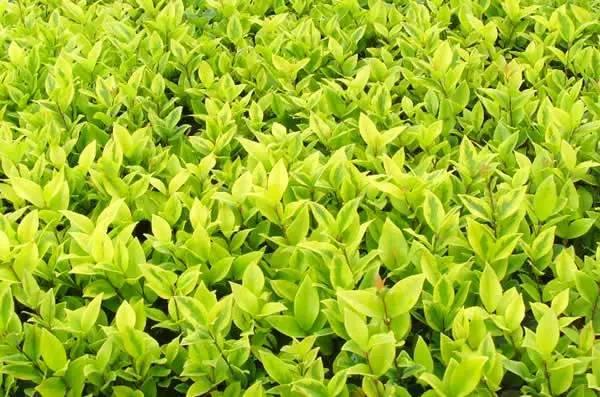
69: Sweet clover
Morphological characteristics:
Also known as clover, it is a biennial or annual herb. The taproot is less than 2 meters deep. The stem is erect, multi-branched, 50-120 cm tall, reaching a height of over 2 meters. The flowers are small, 3 to 4 mm long. The calyx is bell-shaped with 5 teeth, and the corolla is butterfly-shaped, yellow, with the flag petal longer than the wing. The pods are ovoid or subglobose, about 3.5 mm long, almost black when mature, with a reticulate texture, and contain a single seed.
Growth habits:
It is very drought-tolerant and germinates when the soil moisture content is 9%. It is also cold-resistant and barren, and has a certain salt tolerance. It is not very demanding on soil.
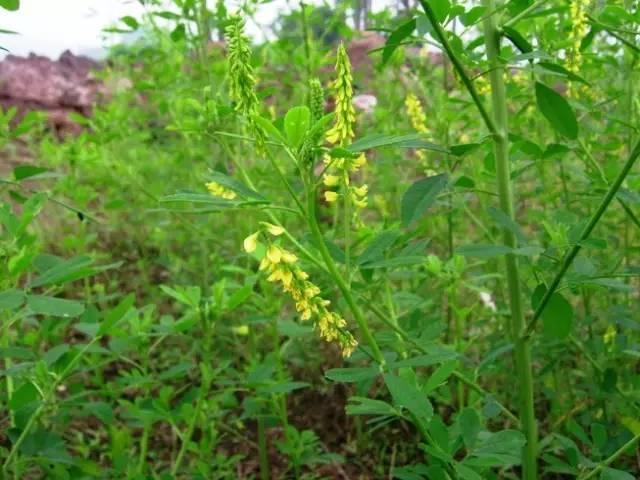
70: Cypress
Morphological characteristics:
The bark is dark gray with longitudinal cracks on the trunk surface. The crown is cylindrical. Most leaves are scaly (the main difference from cypress), while a few are spiny and closely arranged in opposite pairs along the branches.
Growth habits:
It prefers full sun and is best grown in well-drained sandy soil.
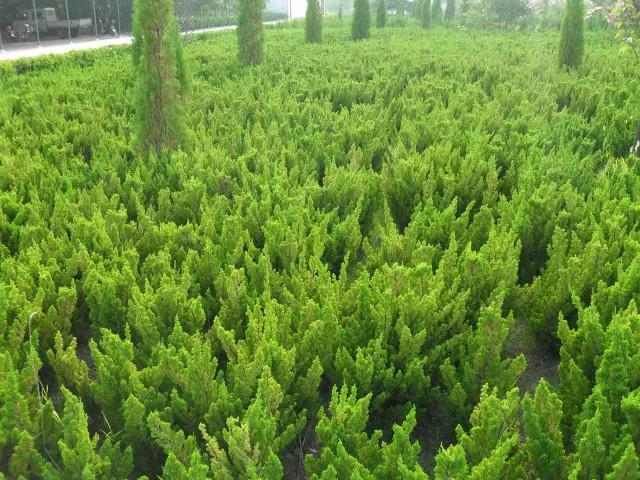
71: Zhugecai
Morphological characteristics:
February orchids range in height from 20 to 70 cm, typically 30 to 50 cm. They have erect, single-stem, inflorescences in terminal racemes of 5 to 20 flowers. The petals are finely veined. The flowers are often bluish-purple or light red. As the flowering period progresses, the color gradually fades, eventually turning white.
Growth habits:
It is cold-resistant and evergreen in winter. It is also more shade-tolerant and can be used as a ground cover with good mulch effect.
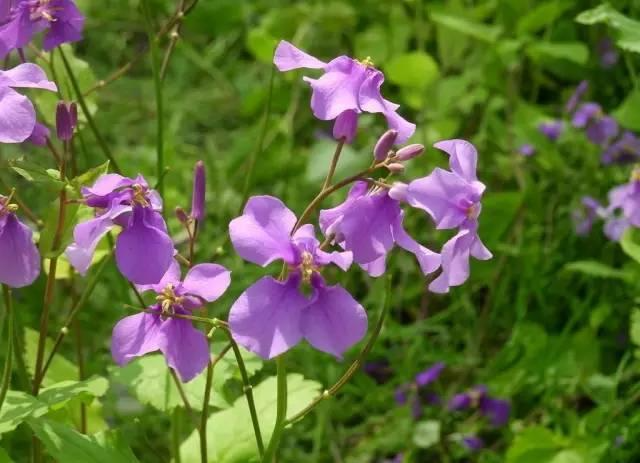
72: Delphinium
Morphological characteristics:
Delphinium is a perennial herbaceous plant in the Ranunculaceae family. Its name comes from its distinctive flower shape, which resembles a swallow. The flowers are approximately 4 cm in diameter, elegant and attractive. They grow 35 to 65 cm tall, with sparse stems and palmately lobed leaves. The inflorescences contain 3-15 flowers, with petals that are shaped, blue or purplish-blue, and 1.5-1.8 cm long.
Growth habits:
It grows on hillsides, grasslands and fixed sand dunes. It is best to choose a cool, ventilated and dry environment with plenty of sunlight and sandy loam with good drainage.
